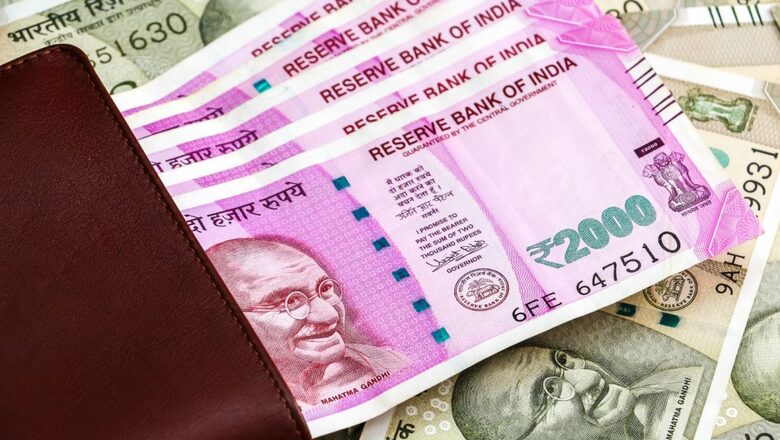
views
The Reserve Bank of India (RBI) has recently increased the repo rate by 50 basis points to tame rising inflation in the country. With the latest hike, the repo rate is back to the pre-pandemic level of 5.40 per cent. This has been third consecutive repo rate hike by the central bank of India since May — an off-cycle rate revision of 40 basis points in May, followed by a 50-basis-points lending rate increase in June. The repo rate has been raised by 140 basis points between May and August.
Repo rate is the rate at which the Reserve Bank of India lends money to banks and other financial institutions. It must be noted that the all-floating rate retail loans sanctioned by banks after October 1, 2019 are linked to an external benchmark. For most of the banks, this external benchmark is repo rate. Rising repo rate will shoot up the interest rates of repo-rate linked home loans and personal loans. Home loans linked to Marginal Cost of Funds-based Lending Rate (MCLR) and Base Rate will also become expensive as borrowing cost of the banks will surge after repo rate hike.
“The increase in repo rates by the RBI will in turn increase the interest rates for different products like home loans, etc. This in turn increases the burden for borrowers. Therefore, borrowers will feel a pinch in their pockets,” said Sujay Das, chief risk officer, Freo.
Loan Interest Rates to Increase; Borrowers to Feel the Pinch
“Home loans and other retail loans linked to repo rates would witness the quickest transmission of policy rate hikes. The transmission would be quicker for fresh floating rate retail loans,” said Naveen Kukreja – CEO and co-founder, Paisabazaar.
The exact date of transmission of the increased policy rates for fresh home loan and other retail loan borrowers would depend on the rate reset dates set by the banks as per their guidelines. For existing floating rate loans linked to repo rate, the borrowers would be charged higher rates from their interest reset dates, Kukreja added.
Several banks including HDFC Bank, ICICI Bank, Punjab National Bank (PNB), Bank of Baroda (BoB), Canara Bank have already raised their lending rates, following the announcement of RBI on August 5.
What Should Home Loan Borrowers Do Now?
Increase EMI or Loan Tenure?
To mitigate the impact of rising interest rates, the existing home loan borrowers can either their equated monthly instalments (EMI) or their loan tenures. “Note that opting for the tenure increase option would result in higher interest cost than the EMI increase option,” Kukreja added.
For instance, you have taken a Rs 30 lakh home loan at 7.55 percent interest per annum, with a tenure of 25 years. The EMI comes at Rs 22,267. After the latest rate hike by the Reserve Bank of India, the revised interest will be 8.05 per cent. At the new rate, you have to shell out Rs 23,254 for EMI, considering So your EMI will jump by Rs 987 per month. The interest burden will increase by Rs 2.95 lakh for the entire tenure.
Now, most of the banks prefer to extend the loan tenure while keeping the EMIs fixed. So, if the loan tenure gets extended by 36 months, the interest burden will sharply jump. In the same example, if interest rate remains at 7.55 per cent and the prepayment tenure increases by 3 years, the interest burden will be hiked by Rs 5.39 lakh.
Prepayment of Home Loan
To save the rising interest cost, the borrowers can consider prepayment option.”Existing home loan borrowers with adequate surpluses should prepay their home loans and preferably opt for the tenure reduction option to generate higher savings in interest cost,” suggested Kukreja. Regular prepayment will significantly lower the outstanding loan amount.
Home Saver Option is Here for You
Borrowers having limited liquidity can opt for the home saver option. Under this facility, an overdraft account is opened in the form of a current or savings account where the borrower can park his surpluses and withdraw from it as per his financial requirements. The interest component of the home loan is calculated after deducting the surpluses parked in the savings/current account from the outstanding home loan amount.
Balance Transfer: Should you Go for it?
Another option could be transferring the balance to a lender offering competitive interest rates. In simple words, eligible borrowers can shift their home loans to a bank which offers lower interest rates than their existing lender. “Existing home loan borrowers who have witnessed substantial improvements in their credit profile availing their home loan should explore the possibility of interest cost savings through home loan balance transfer,” Kukreja suggested.
Remember that, that there are additional costs involved in the process such as processing fee or penalty to transfer the loan balance from one lender to another. So, borrowers need to calculate the advantages and disadvantages and savings before opting for balance transfer.
Read the Latest News and Breaking News here



















Comments
0 comment